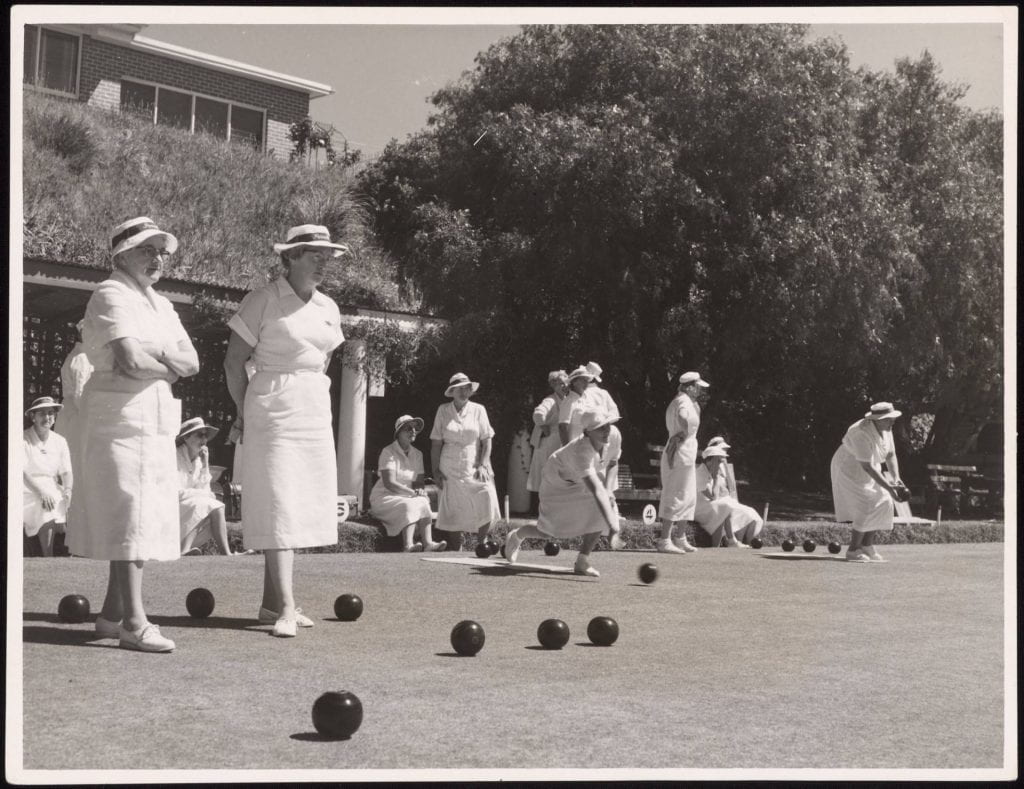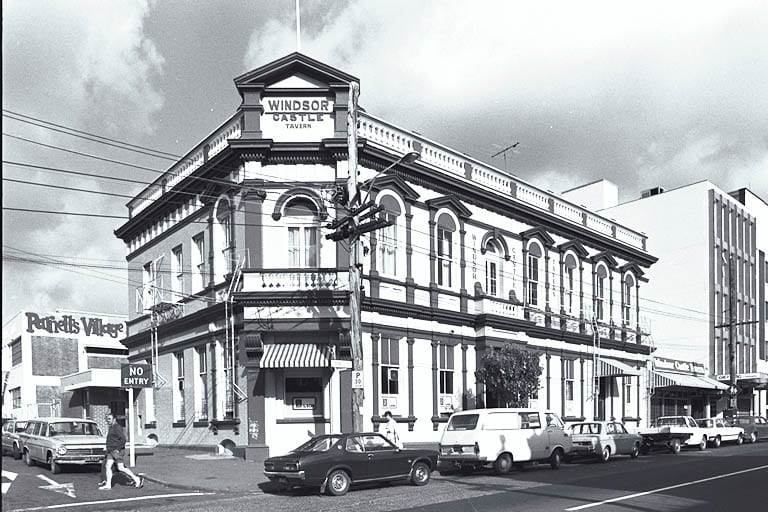Part Four
Living in Parnell
Part One
Parnell: The Patchwork Suburb
Part Two
Parnell: A Suburb of Contrasts
Part Three
Gentrification in Parnell
In previous pieces, I have touched upon the changing makeup of Parnell’s social and physical landscape throughout the twentieth century. In this final piece of the series, I wanted to touch on some of the ways in which residents of Parnell experienced the area during this time. How was the divide between ‘upper’ and ‘lower’ Parnell expressed? What did people do for fun?
‘Upper’ and ‘Lower’ Parnell
As a suburb, Parnell seemingly had two distinct areas: ‘upper’ Parnell, and ‘lower’ Parnell. The split, according to resident David Grace’s memory, came at Aorere Street; anything further up Parnell Road, closer to Newmarket and Remuera and the Orakei Basin, seemed to constitute Upper Parnell.[1] It was an area of large homes, middle and upper class residents, and greater affluence in general. Closer to the city and the Domain, was ‘lower Parnell’, an area which had been described as ‘slummy’ by both politicians and residents of Auckland.[2] While this divide is not apparent today, it was obviously important to some people. Patricia Coll, whose family has a long link with Parnell, recalls an old family joke;
“When my uncle came to propose to my aunt after the war – my aunt hadn’t come back from overseas at that point – and he’d gone to see my grandmother and announced he wanted to marry her daughter, and he went home and told his mother, and she said ‘is it upper Parnell or lower Parnell that they are from’, and my grandmother, who had had many restaurants and tea rooms and goodness knows what else was so outraged that I gathered it was only crackers and cheese that was served to this woman when she came because she was such a snob!”[3]
What to do in Parnell?
It is highly likely that the ongoing perception of Parnell as slumlike would have contributed to Parnell Road’s seemingly main function as a thoroughfare. Public transport lines, the lifeblood of an Auckland before cars, congregated along Parnell Road and would often be directed towards Newmarket.[4] The tram, which for decades had run along Parnell Rise and Road, was closed in 1956. While Parnell was not necessarily somewhere people went for fun, there were still plenty of leisure opportunities for local residents.
The Parnell Baths were one of the most popular facilities in Parnell. In the immediate post-war years, attendance at the Baths had been on the decline, with only 13,000 people attending in the year of 1948.[5] However, a redesign was pursued in the early 1950s, reflective of the international ‘Lido’ style. The reopening of the Baths saw attendance skyrocket, with 86,000 attendees in 1951 and up to 136,000 annual visitors in the year of 1954/1955.[6] Attendees at the Parnell Baths spanned age groups and social classes; businessmen and lawyers would pop down for a quick lunchtime swim, while after school the Baths would be packed by children and teenagers looking for something to do.[7] Many residents have incredibly fond memories of the Baths, but they were not the only place to go to unwind in Parnell. For sport, Carlaw Park and the Auckland Domain provided vast green space for after-school recreation. Peter McKay, who grew up in Parnell, recalls that football at the Domain was a common after-school activity.[8] However, these spaces were typically attractive to schoolchildren. What did adults do for fun?

Photo: Parnell Baths, 1964. Auckland Libraries Heritage Collections 580-9417, Auckland.
Leisure spaces directed towards adults occupied a different sphere. One venue, the Auckland Bowling Club, actually experience serious difficulties in the post-war period. While it initially offered a wide variety of sports – croquet, tennis, bowls, and more – it was forced to sell its freehold property to the Auckland Council in 1951, in order to meet its financial obligations. The land itself was leased back to the Club, but operations had to shrink.

Photo: Playing lawn bowls at Parnell, 1960. Auckland Libraries Heritage Collections 895-A64170, Auckland.
Pubs were perhaps the most successful adult-intended leisure spaces of Parnell. When one walks along Parnell Road today, the vast number of pubs in such a small stretch showcases the legacy of Parnell’s heritage. Resident Peter McKay remembers them all:
“Starting from the bottom was The Strand Hotel which is still there. Coming up the road on the right hand side was The Exchange, which was a Waitemata hotel in those days. On the left hand side was the Windsor Castle, which is a Lion pub, and the next one up was the Alexandra, the one we were talking about, on the right side, they were all in Parnell. Such a small place, and all those pubs.”[9]

Photo: Showing the Windsor Castle Hotel in Parnell Rise, circa 1960s – 1970s. Auckland Libraries Heritage Collections 435-B5-161, Auckland.
Of course, New Zealand’s laws surrounding pubs were a lot stricter during this time. “The trouble was you had to get as much down as you could before six o’clock, otherwise you got thrown out.” Until 1967, New Zealand’s alcohol licensing laws meant that all pubs had to close at 6pm. This policy had come about during the First World War, and contributed to the tradition known as the ‘6 o’clock swill’. While many working men happily engaged in this tradition, it wasn’t necessarily one their wives condoned. Les Greer, who grew up in Parnell in the 1940s, recalls that his home was located in the perfect place to make sure his father avoided all of Parnell’s pubs on his way home from work.[10] It is unlikely that his family was the only one which sought to limit their father’s access to the pub.
What next for Parnell?
Parnell has seen major changes throughout the twentieth century. Initially a suburb of contrasts which had no appeal to visitors, the Parnell of today is often seen as a destination hotspot. The loss of the tram in 1956 has been remedied as Parnell has been incorporated into Auckland’s growing public transport network, with a train station opening in 2017. The gentrification of the 1960s and 1970s gave Parnell a much-needed overhaul, but it is important to note that the process did not erase Parnell’s divisions. Today, a distinction between ‘upper’ and ‘lower’ Parnell exists… of sorts. It should be understood as a divide between tenants and homeowners, the same divide occurring throughout New Zealand. Parnell is, and always has been, home to both groups, but as Auckland continues to grow, and house prices increase, it will only become harder for tenants to make the transition to homeownership. What does the future hold for Parnell? Only time will tell, but it is highly likely that one of Auckland’s oldest suburbs has a future just as varied as its past waiting for it.
[1]David Grace, ‘Our House in Aorere Street: Memories of Parnell in the 1930s’, Parnell Heritage Journal, 2, 2012, p. 26.
[2]Jenny Clay, Oral History Recording with Michael Willison, 2013. Auckland Libraries Heritage Collections, OH-1120.
[3]Jenny Clay, Oral History Recording with Patricia Coll, 2013. Auckland Libraries Heritage Collections, OH-1120.
[4]Graham Bush, ‘Public Transport Serving Parnell’, Parnell Heritage Journal, 5, 2015, pp. 24 – 25.
[5]Sue Monk, ‘Parnell Baths: The Dipping and Diving Fortunes, 1914 – 2014’, Parnell Heritage Journal, 3, 2013, p. 38.
[6]Sue Monk, ‘Parnell Baths: The Dipping and Diving Fortunes, 1914 – 2014’, Parnell Heritage Journal, 3, 2013, p. 38.
[7]Joanna Boileau, Sue Monk, Parnell Baths: A Jewel in Auckland’s Crown, Parnell Heritage Inc., Auckland, 2015, pp. 38 – 39.
[8]Shelagh Coop and Fleur Denning, 2010, Oral History Recording with Peter McKay, Parnell Heritage Inc., PHOH2010/002
[9]Shelagh Coop and Fleur Denning, 2010, Oral History Recording with Peter McKay, Parnell Heritage Inc., PHOH2010/002
[10]Les Greer, ‘Growing Up in Parnell in the 1940s’, Parnell Heritage Journal, 4, 2014, p. 28.
